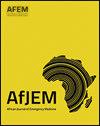Embracing 3D printing in emergency medicine training in Africa
IF 1.2
4区 医学
Q3 EMERGENCY MEDICINE
引用次数: 0
Abstract
Africa's emergency medicine training faces challenges of limited resources, inadequate simulation tools, and few locally relevant training models. This article explores how three-dimensional (3D) printing can help address these gaps by enabling the creation of affordable, customizable models for procedural skills and simulation-based education. We discuss the context of emergency medicine training in Africa, where limited access to high-fidelity manikins and other teaching aids hampers skills acquisition. The model printing format may be of limited applicability in the context of dynamic simulations, where the model is required to interact and perform a function, versus static simulation, with the emphasis on identification and directed procedures. We highlight illustrative use cases, including a 3D-printed airway management manikin and a basic suturing practice pad, to demonstrate the technology’s potential for hands-on learning. Key benefits of integrating 3D printing into training programs are examined, such as improved access to simulation, better local adaptability, and increased opportunity for producing affordable task trainers that are suited for hands-on emergency procedures. We also acknowledge challenges, from startup costs and infrastructure needs to the learning curve of 3D printers and suggest practical steps for implementation. This commentary encourages educators and institutions in Africa to explore 3D printing for education, and we envision it becoming integral to emergency medicine training across the continent; fostering skill development, self-sufficiency, and ultimately improving patient care.
在非洲急诊医学培训中采用3D打印技术
非洲的急诊医学培训面临着资源有限、模拟工具不足以及缺乏与当地相关的培训模式等挑战。本文探讨了三维(3D)打印如何通过为程序技能和基于模拟的教育创建负担得起的、可定制的模型来帮助解决这些差距。我们讨论了非洲急诊医学培训的背景,在那里,高保真人体模型和其他教学辅助工具的有限获取阻碍了技能的获得。模型打印格式在动态仿真环境中可能适用性有限,在动态仿真环境中,需要模型进行交互并执行功能,而静态仿真环境则强调识别和指导过程。我们重点介绍了说导性用例,包括3d打印气道管理假人和基本缝合练习垫,以展示该技术在实践学习方面的潜力。研究了将3D打印集成到培训计划中的主要好处,例如改进模拟访问,更好的本地适应性,以及增加生产适合动手紧急程序的负担得起的任务培训器的机会。我们也承认挑战,从启动成本和基础设施需要3D打印机的学习曲线,并建议实施的实际步骤。这篇评论鼓励非洲的教育工作者和机构探索3D打印教育,我们设想它将成为整个非洲大陆急诊医学培训的一部分;促进技能发展,自给自足,并最终改善病人护理。
本文章由计算机程序翻译,如有差异,请以英文原文为准。
求助全文
约1分钟内获得全文
求助全文
来源期刊

African Journal of Emergency Medicine
EMERGENCY MEDICINE-
CiteScore
2.40
自引率
7.70%
发文量
78
审稿时长
85 days
 求助内容:
求助内容: 应助结果提醒方式:
应助结果提醒方式:


